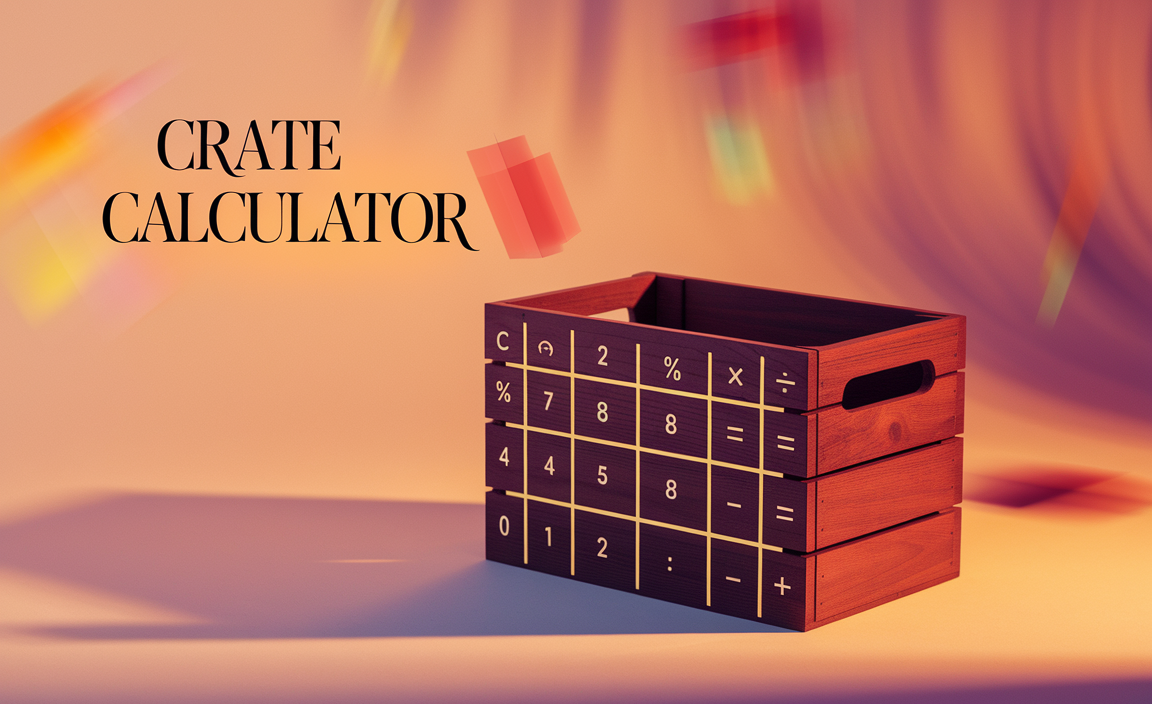When it comes to woodworking, precision is key. Many people wonder which tool offers better accuracy: a bandsaw or a miter saw. Have you ever faced a project where one small mistake can ruin hours of hard work? Choosing the right saw can make all the difference.
Here’s a fun fact: Did you know that bandsaws can make intricate cuts that miter saws struggle with? But miter saws shine with precise crosscuts. It’s like having two superheroes that each bring unique powers to the table!
In this article, we will explore bandsaw vs miter saw accuracy. We’ll dive into the strengths and weaknesses of each tool. Whether you’re a beginner or a seasoned pro, understanding these differences can help you choose the right saw for your next project.
Table of Contents
Bandsaw Vs Miter Saw Accuracy: Choosing The Right Tool
Bandsaws and miter saws excel in different ways. Do you need to make curved cuts? The bandsaw is your best choice! It offers flexibility and can handle thick materials. However, for precise angles and crosscuts, a miter saw steals the show. It easily cuts clean angles and is perfect for trim work. Both tools have their strengths. Understanding their accuracy will help you choose the right one for your project. Wouldn’t it be fun to see which one wins in your workshop?
Understanding Bandsaws
Definition and function of bandsaws. Types of cuts achievable with bandsaws.
A bandsaw is a power tool that uses a long blade with teeth to cut various materials like wood or metal. It can make straight cuts, curved cuts, and even complex shapes. This flexibility makes it popular among woodworkers and metalworkers. Bandsaws are very accurate and help create smooth edges on projects. Below are some types of cuts you can achieve with a bandsaw:
- Straight cuts
- Curved cuts
- Re-sawing (cutting thick wood into thinner pieces)
- Contour cuts (complex shapes)
What is a bandsaw used for?
A bandsaw is used for cutting wood, metal, and other materials precisely. It is great for creating furniture, crafts, and more!
Understanding Miter Saws
Definition and function of miter saws. Types of cuts achievable with miter saws.
A miter saw is a tool that helps you make precise cuts in wood. It is great for making both straight and angled cuts. People use miter saws to create beautiful furniture, picture frames, and more. There are different types of cuts you can achieve:
- Crosscuts: Cutting across the grain of the wood.
- Bevel cuts: Cutting at an angle along the thickness of the wood.
- Miter cuts: Cutting at an angle across the width of the wood.
This tool is popular for projects where exact angles are important. You’ll find it handy for home repairs or crafting!
What are the uses of a miter saw?
Users often ask, “What are the common uses of a miter saw?” It is perfect for making pieces fit together well, like doors or window frames! You can also trim edges neatly. Are you ready to get started with a miter saw? It makes cutting easy and fun!
Accuracy in Bandsaws
Factors affecting accuracy in bandsaws. Common applications for precision cuts with bandsaws.
Several factors can affect how accurate a bandsaw cuts. The blade quality and tension are crucial. A dull blade is like trying to cut a steak with a butter knife—no fun at all! The alignment of the saw also plays a big role. If everything is crooked, you might end up with more wonky cuts than straight ones.
| Factor | Impact on Accuracy |
|---|---|
| Blade Quality | High-quality blades ensure cleaner cuts. |
| Blade Tension | Proper tension keeps cuts straight. |
| Saw Alignment | Correct alignment prevents drift. |
Common uses for bandsaws include cutting curves in wood and metal. They shine in making intricate shapes. So, whether you’re building a birdhouse or crafting furniture, bandsaws offer the accuracy you need. Remember, with great accuracy comes great responsibility—like not cutting off your thumb!
Accuracy in Miter Saws
Factors affecting accuracy in miter saws. Common applications for precision cuts with miter saws.
Several factors influence the accuracy of miter saws. First, the quality of the blade matters. A dull blade can make cuts messy, like trying to slice bread with a spoon! Next, the setup must be precise. Any wobble or misalignment will ruin your project. Miter saws are great for making clean cuts, especially for trims, angles, and frames. They love challenges, especially when a project needs snazzy corners!
| Factors | Impact on Accuracy |
|---|---|
| Blade Quality | Sharp and clean blades make smooth and precise cuts. |
| Setup Precision | Proper alignment prevents wobbling and ensures straight cuts. |
| Wood Type | Different woods can affect the cut’s neatness. |
Using a miter saw is like being a superhero of woodwork. With practice, you will cut as straight as an arrow, impressing everyone around!
Comparative Analysis of Accuracy
Sidebyside comparison of accuracy metrics. Realworld examples demonstrating precision.
Comparing the accuracy of a bandsaw and a miter saw reveals interesting differences. Bandsaws excel in cutting curves and thick materials, making them precise for intricate shapes. Miter saws shine in making angled cuts, perfect for frames and moldings. Here are some key points:
- **Bandsaw Accuracy:** Great for detailed curves and thicknesses.
- **Miter Saw Accuracy:** Reliable for straight and angled cuts.
For example, a bandsaw might cut a stylized wooden sign perfectly, while a miter saw can create flawless picture frames. Both tools are accurate in their own ways, depending on the project.
How accurate are bandsaws and miter saws?
Both tools are precise but in different ways. Bandsaws are best for curves, while miter saws are excellent for straight and angled cuts. Your choice depends on your project needs.
Tool Maintenance and Its Impact on Accuracy
Maintenance tips for maintaining bandsaw accuracy. Maintenance tips for maintaining miter saw accuracy.
Keeping your tools in good shape helps them work better. For a bandsaw, check the blade tension and keep it clean regularly. Changing the blade when it gets dull is also important. This keeps your cuts straight and accurate.
For a miter saw, ensure the blade is sharp and the bed is clean. Regularly check the angle settings to make sure they are correct. A tiny mistake can lead to big problems in your projects!
- Check and replace worn-out parts.
- Clean the saw after each use.
- Align your blades properly.
What are key maintenance tips for accuracy?
To maintain accuracy, always use sharp blades.
Choosing the Right Tool for Your Needs
Factors to consider when choosing between a bandsaw and miter saw. Recommendations based on specific project requirements.
Choosing the right tool can feel like picking a favorite ice cream flavor—tough, but fun! First, think about what you want to cut. Bandsaws are like acrobats, great for curves and thick wood. In contrast, miter saws slice clean angles, perfect for trim work. Consider how often you’ll use the tool. If you’re a weekend warrior, a miter saw might work best. But for woodworking wizards, a bandsaw could open new doors!
| Factor | Bandsaw | Miter Saw |
|---|---|---|
| Best For | Curved cuts, thick stock | Precision angles, quick crosscuts |
| Usage | Woodworkers, hobbyists | Finish carpenters, DIYers |
| Portability | Less portable | More portable |
Ask yourself: Do I need to cut curves or precise angles? Once you answer, you’ll know which tool to grab. And remember, choosing a tool is like choosing socks—everyone has their favorites, and that’s okay!
Expert Insights and User Experiences
Interviews with professionals about their preferences. User testimonials highlighting accuracy experiences.
Many experts share interesting views on the accuracy of bandsaws and miter saws. Professionals from carpentry and woodworking often prefer bandsaws for their cutting speed and precision. They highlight how bandsaws easily handle thick materials. User testimonials also note their experiences:
- “My bandsaw cuts are clean and fast!”
- “I use a miter saw for perfect angle cuts every time.”
Accuracy is key in these tools. Users suggest trying both to find what suits their projects best.
Which saw is more accurate?
Experts say bandsaws provide great straight cuts. Miter saws excel at angles. It depends on what you need to cut!
Conclusion
In conclusion, both bandsaws and miter saws have unique strengths in accuracy. Bandsaws excel at cutting curves and thicker materials, while miter saws shine in making precise angled cuts. Consider your project needs when choosing a saw. If you want to learn more, check out guides and videos online. Your next woodworking project can be a fun way to practice these tools!
FAQs
What Are The Key Factors That Influence The Accuracy Of Cuts Made With A Bandsaw Compared To A Miter Saw?
The accuracy of cuts with a bandsaw depends on how well the blade is set and the type of material you’re cutting. Bandsaws can cut curves and thick materials, but they need careful setup. Miter saws are easier to use for straight cuts and quick measurements. The sharpness of the blade also matters for both saws, as sharp blades make cleaner cuts. Always make sure your workpiece is secure to get the best results!
How Does The Design Of A Miter Saw Contribute To Its Precision For Crosscuts And Angled Cuts?
A miter saw has a special blade that cuts at different angles. The saw can move side to side, which helps you make those angled cuts easily. There’s a measuring guide to help you see where to cut. This design keeps your cuts straight and accurate. So, you get better results when you’re working on your projects!
In What Scenarios Might A Bandsaw Provide More Accurate Results Than A Miter Saw, Particularly For Curved Cuts?
A bandsaw is great for cutting curves and shapes. It has a thin blade that can move smoothly. This helps you make better cuts on rounded edges. A miter saw is good for straight cuts, but it can’t handle curves well. So, if you need to cut a circle or a wave, you’ll get better results with a bandsaw.
What Techniques Can Be Employed To Enhance The Accuracy Of Both Bandsaws And Miter Saws During Use?
To make bandsaws and miter saws more accurate, we can do a few things. First, always keep the blade sharp. A sharp blade cuts better and stays on track. Next, measure your wood carefully before cutting. Use a square to make sure the edges are straight. Finally, clamp your wood down so it doesn’t move while you cut. These tips help us get better and safer cuts every time!
How Do Blade Type And Settings Affect The Overall Cutting Accuracy Of Bandsaws And Miter Saws?
The type of blade you use on a bandsaw or miter saw can change how accurately it cuts. For example, a sharp, thin blade makes finer cuts, while a thicker blade is better for bigger jobs. Also, adjusting the settings can help. When you set the right angle or speed, it helps the saw cut straight and true. So, using the right blade and settings helps you make clean and accurate cuts!






